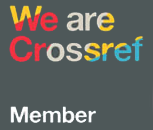The Bulletin of the Institute of Economics of the Russian Academy of Sciences № 6/2023. Issues of Economic theory.
Petr A. Orekhovsky
Dr. Sci. (Econ.), Professor, Chief Researcher at the Institute of Economics of the Russian Academy of Sciences, Moscow, Russia
ORCID: 0000-0003-2816-1298
SOVIET STRUCTURALISM: E. PREOBRAZHENSKY, S. STRUMILIN, N. VOZNESENSKY, YU. YAREMENKO
 109-133 109-133 |
 364.37 KB 364.37 KB |
Abstract
Structuralism is a relatively young area of economic research, but it already has its own history in Russia. The first debates over the rates and proportions of the Soviet economy began back in the 1920s. The discussions between “geneticists” and “teleologists” were quite open then. Geneticists defended the traditionalist approach, relying on the exhaustion of the restoration impulse and the need to return the country to “normal”, average world growth rates and the accumulation rate of 16-18%. Teleologists relied on the “law of socialist accumulation” and the “theory of two regulators”. They were confident in the possibilities of accelerated development; even the “starting version” of the 1st Five-Year Plan provided for achieving an accumulation rate of more than 20%. And in the end, despite the monstrous mistakes the Bolshevik leadership made during collectivization, the teleologists turned out to be right. The 2nd Five-Year Plan was more successful — the planned savings rate was reduced, the production of consumer goods was increased, and it was possible to switch from cards to planned trade turnover. The idea of accelerated development and the discovery of the law of socialist accumulation belonged to E. Preobrazhensky, but its implementation, including through planned calculations, was carried out by S. Strumilin, and starting from the 3rd Five-Year Plan — by N. Voznesensky.
The end of the post-war period and the death of I. Stalin marked the end of “adaptive modernization”. The 8th Five-Year Plan, which aimed for faster growth of Group B industries over Group A, failed to be fulfilled. By the end of the 1970s the Soviet economy fell into inevitable stagnation. Economists of that time gave alarmist forecasts about the decline in growth rates, and proposed measures to overcome the crisis, but all of those were palliative in nature. The structuralist theory of multi-level economy by Yu. Yaremenko appeared at the same time. This theory contained a number of provisions that could be called heretical, contradicting both Marxism and the neoclassical mainstream. Despite its fruitfulness, it was ignored by both planners and Soviet leaders.
Keywords: structuralism, NEP, geneticists, damping curve, teleologists, structural crisis, multilevel economy.
JEL: B14, B15, B31, B59, N14
EDN: LFGKKN
DOI: https://doi.org/10.52180/2073-6487_2023_6_109_133
References
- Bethell T. Property and Prosperity. M.: IRISEN, 2008. (In Russ.).
- Van der Wee G. History of the World Economy. 1945–1990. M.: Nauka, 1994. (In Russ.).
- Voznesensky N.A. Academician N.A. Voznesensky. Essays. 1931–1947. M.: Nauka, 2018. (In Russ.).
- Voznesensky N.A. Marxism and Counter-Revolutionary Idealism of Rubin. About I. Rubin’s Article in the Fifth Book of the “Marx and Engels Archive” // Voznesensky N.A. Academician N.A. Voznesensky. Essays. 1931–1947. M.: Nauka, 2018. Pp. 21–30. (In Russ.).
- Galushka A., Niyazmetov A., Okulov M. Crystal of Growth Towards the Russian Economic Miracle. M.: Nashe zavtra, 2021. (In Russ.).
- Glazyev S.Yu. Theory of Long-Term Technical and Economic Development. M.: VlaDar, 1993. (In Russ.).
- Groman V.G. On Some Patterns Empirically Detected in Our National Economy // Planning Economy. 1925. No. 1. Pp. 88–101. (In Russ.).
- Groman V.G. On Some Patterns Empirically Detected in Our National Economy // Planning economy. 1925. No. 2. Pp. 125–141. (In Russ.).
- Kornai J. Deficit. M.: Nauka, 1990. (In Russ.).
- Kotkin S. Armageddon averted. The Collapse of the Soviet Union, 1970 – 2000. M.: New Literary Review, 2018. (In Russ.).
- Kritsman L. The Heroic Period of the Great Russian Revolution (Experience in Analyzing the So-Called “Military Communism”). M.–L.: State publishing house, 1925. (In Russ.).
- Orekhovsky P.A. Left Utopia in the 21st Century // Social sciences and modernity. 2020. No. 2. Pp. 162–175. DOI: 10.31857/S086904990009214-7. (In Russ.).
- Preobrazhensky E.A. New Economics (Theory and Practice): 1922–1928 M.: Publishing House of the Main Archive of Moscow, 2008. (In Russ.).
- Sapov G. Three interviews with E.B. Ershov (February–March 1999). http://www.sapov.ru/staroe/si06.html (date of access: 04.11.2023). (In Russ.).
- Sokolov A.S. Between Cards and Trade Turnover: The Second Soviet Five-Year Plan // Issues of theoretical economics. 2021. No. 2. Рp. 102–110. DOI: 10.52342/2587-7666VTE_2021_2_102_110. (In Russ.).
- Strumilin S.G. Problems of Planning in the USSR. L.: Academy of Sciences USSR, 1932. (In Russ.).
- Khlevnyuk O. Corporation of Impostors. Shadow Economy and Corruption in the Stalinist USSR. M.: New Literary Review, 2023. (In Russ.).
- Shiller R. Irrational Optimism: How Reckless Behavior Drives Markets. M.: Alpina Publisher, 2013. (In Russ.).
- Erlich A. Discussions about Industrialization in the USSR. 1924–1928. M.: Delo, 2010. (In Russ.).
- Yaremenko Yu.V. Theory and Methodology for Researching Multi-Level Economics. M., Nauka, 1997. (In Russ.).
- Yaremenko Yu.V. Economic Conversations. Recorded by S.A. Belanovsky. M.: Center for Research and Statistics of Science, 1999. (In Russ.).
- Lewis W.A. The Theory of Economic Growth. N.Y.: Routledge, 1959.
Manuscript submission date: 01.11.2023
For citation:
Orekhovsky P.A. Soviet Structuralism: E. Preobrazhensky, S. Strumilin, N. Voznesensky, Yu. Yaremenko // Vestnik Instituta Ekonomiki Rossiyskoy Akademii Nauk. 2023. № 6. Pp. 109-133. (In Russ.). https://doi.org/10.52180/2073-6487_2023_6_109_133 EDN: LFGKKN






